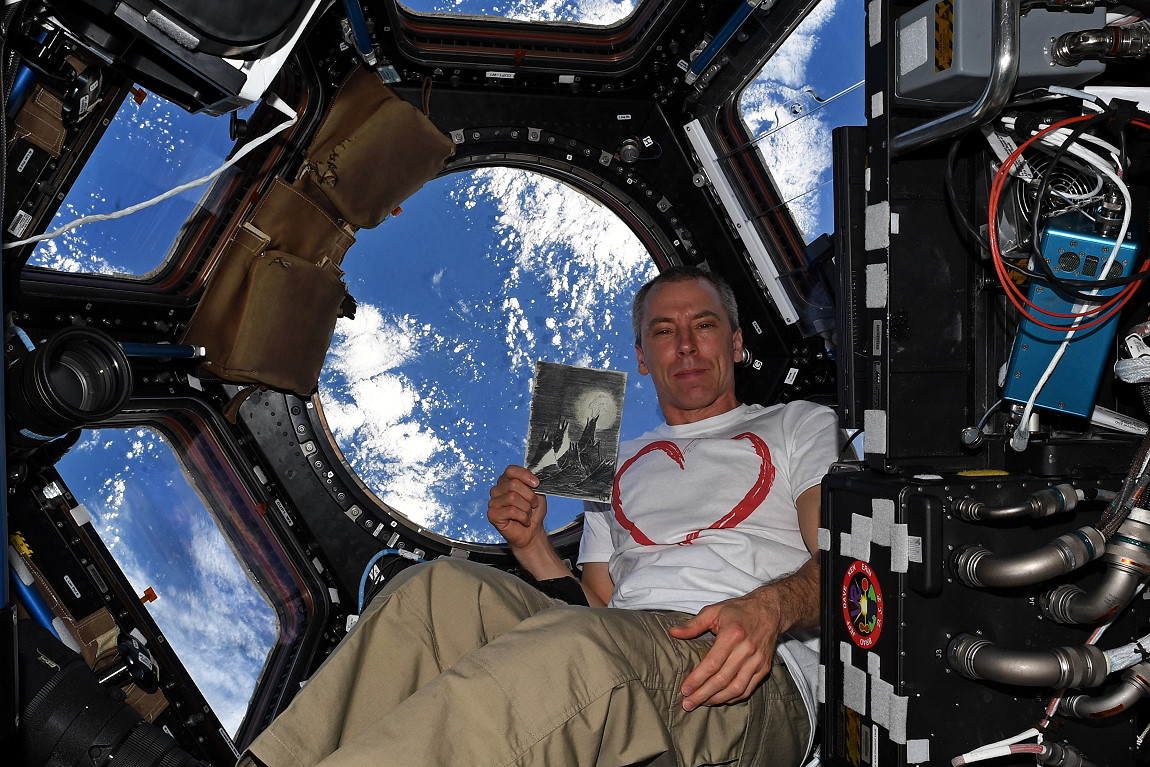
When Expedition 56 astronaut Drew Feustel relinquishes the helm of the International Space Station (ISS) to Germany’s Alexander Gerst, early in October, more than a year will elapse with no U.S. citizen in command of the multi-national orbiting outpost. From that date, and throughout the entirety of 2019—for the first time in the station’s two-decade history—we will see a 12-month calendar year without a U.S. ISS Commander. NASA has revealed that no fewer than two European Space Agency (ESA) astronauts will command the ISS during this period, together with three Russian cosmonauts.
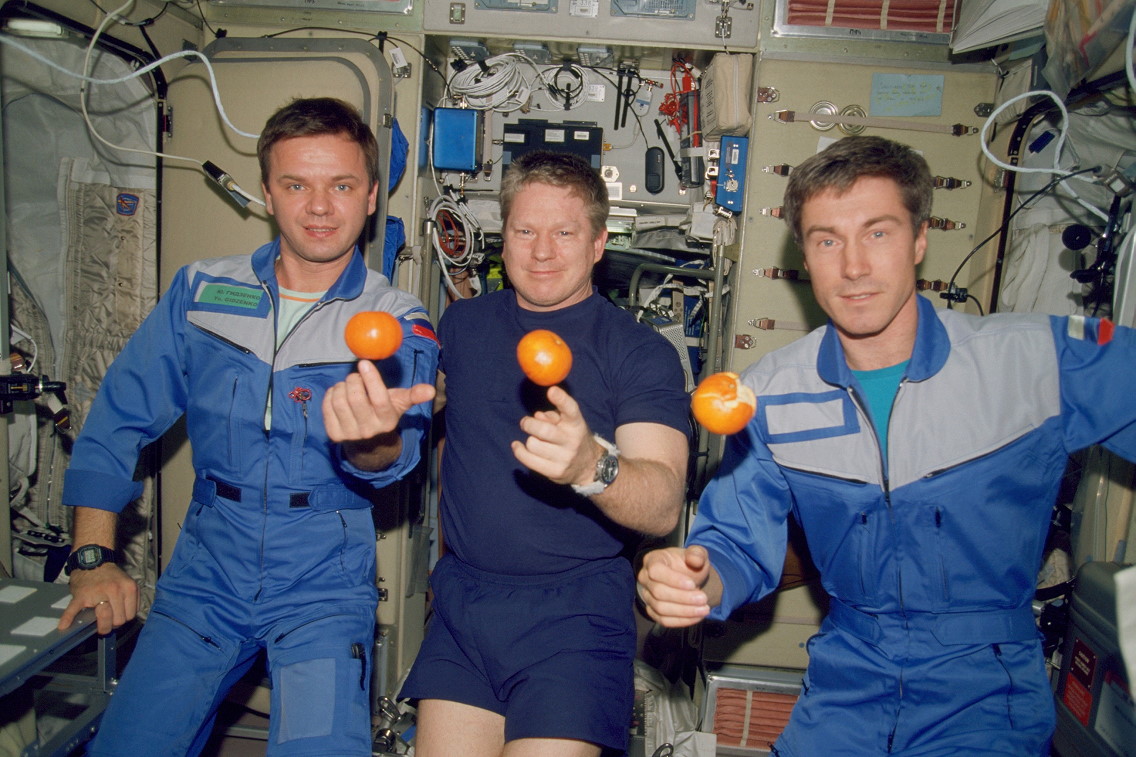
From the very start, the United States’ contribution to the ISS Program was recognized when a NASA astronaut—veteran shuttle flyer Bill Shepherd—was named in early 1996 to command the station’s first long-duration increment. He launched in October 2000, shoulder-to-shoulder with a pair of Russian cosmonauts, and led Expedition 1 until March of the following year. Since then, every calendar year has seen at least one U.S. astronaut at the helm of the station. All told, and including Feustel, who will take command of Expedition 56 next week, 21 U.S. astronauts have led the ISS, three of whom—Jeff Williams, Scott Kelly and former Chief Astronaut Peggy Whitson—have done so on more than one occasion. Key years included 2001, when Frank Culbertson was the only U.S. citizen off the planet during the 9/11 terrorist attacks, and 2007-2008, when Whitson became the first woman in history to command a space station.
With Feustel’s return home on 4 October, German astronaut Alexander Gerst of ESA will take command of Expedition 57, leading the ISS through his own landing on 13 December. His crew will initially comprise three members—Russian cosmonaut Sergei Prokopiev and NASA’s Serena Auñón-Chancellor—before Soyuz MS-10 launches on 11 October, carrying Russia’s Alexei Ovchinin and U.S. astronaut Nick Hague. Originally, a second cosmonaut was also assigned to MS-10, but for the second time in under two years, the unfortunate Nikolai Tikhonov has been removed from a prime crew, due to delays with Russia’s long-awaited Nauka (“Science”) Multipurpose Laboratory Module (MLM). A similar situation occurred in 2017, where vacant seats on Soyuz MS-06 and MS-08 were filled by additional U.S. astronauts. However, according to NASA’s Rob Navias, there are no plans for the vacant third seat on MS-10 to be occupied by an extra U.S. crew member.
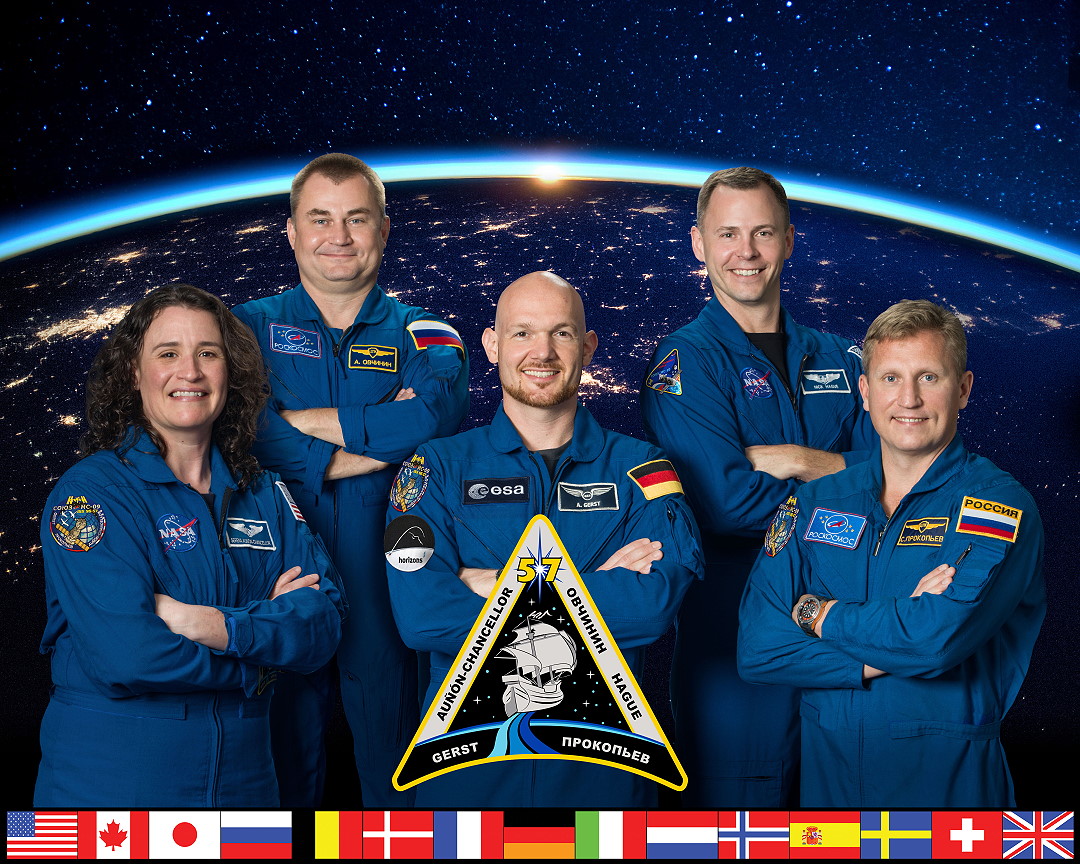
When Gerst, Prokopiev and Auñón-Chancellor return to Earth in December, command of the ISS will pass to Ovchinin, who will lead Expedition 58 as a two-man crew for about a week—marking the first time since the beginning of Expedition 22 in December 2009 that the station’s crew has been temporarily reduced to such a low number—ahead of the arrival of Soyuz MS-11 and Russian cosmonaut Oleg Kononenko, Canada’s David Saint-Jacques and U.S. astronaut Anne McClain on the 20th. Soyuz MS-12 is slated to launch on 5 April 2019, carrying two new crew members uphill in a relatively rare “direct handover” operation and temporarily boosting Expedition 58 to seven-strong. Ten days later, MS-10 will return Ovchinin and Hague back to Earth, after 186 days in space. Kononenko will then take command of Expedition 59, through his own crew’s return home on 8 July, wrapping up 200 days in orbit.
Until recently, it was expected—though formally unannounced—that ISS veteran Shannon Walker would fly aboard MS-12, alongside Russian cosmonauts Oleg Skripochka and Andrei Babkin. Walker had initially been assigned in March 2017 as dedicated backup to Joe Acaba, when he was inserted onto the MS-06 crew at short notice. Last October, the Multilateral Crew Operations Panel (MCOP) approved Walker’s assignment to MS-12. However, earlier in 2018, it became clear that both Babkin and Walker had been removed from MS-12 and, last week, NASA announced that “rookie” astronaut Christina Hammock-Koch would join Skripochka on this crew. According to NASA, Walker’s current role is Chief of the Assigned Crew Branch within the Astronaut Office.
“Humbled, awed and excited to be back training again with our partners in Russia,” Hammock-Koch tweeted last week. “Reminders of their incredible achievements in space keep the motivation and perspective real!” With a third seat now vacant on MS-12, Mr. Navias told AmericaSpace that there are “no plans” for an additional U.S. crew member to fly aboard the mission.
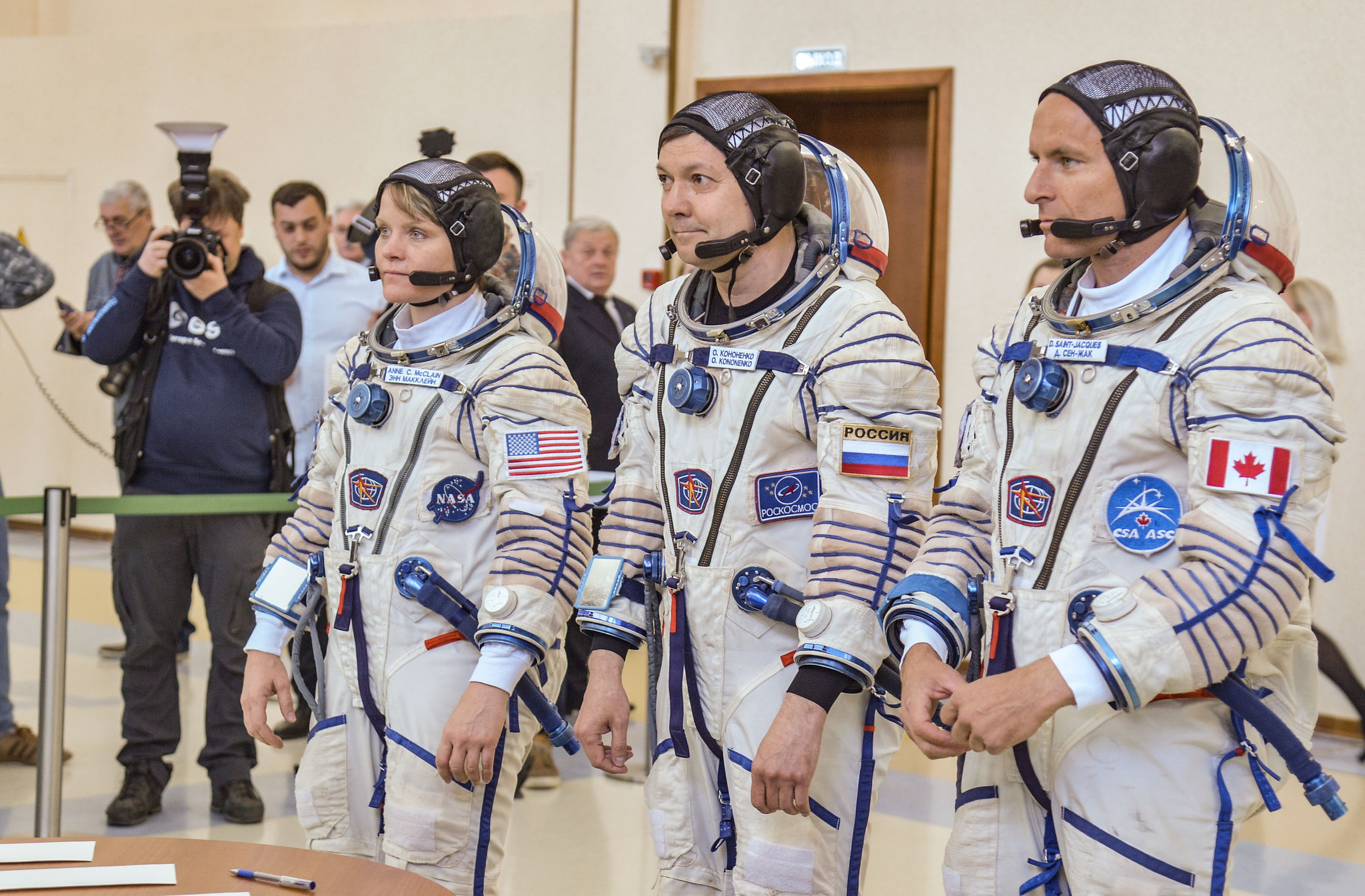
When Kononenko, Saint-Jacques and McClain land in early July, Skripochka will take command of Expedition 60 and lead ISS operations until he and Hammock-Koch return to Earth on 22 October, concluding a 200-day increment. After a few days as a two-member crew, Soyuz MS-13 will launch on 15 July, carrying Russian cosmonaut Aleksandr Skvortsov, Italian ESA astronaut Luca Parmitano and NASA’s Drew Morgan. When Skripochka and Hammock-Koch depart on 22 October, Parmitano will command Expedition 61 until his own crew returns to Earth in late January 2020. Shorly thereafter, Soyuz MS-13 will launch with two Russians and an as-yet-unnamed U.S. astronaut. In doing so, Parmitano will be the third European—after Belgium’s Frank de Winne and Germany’s Alexander Gerst—to command the station and the first Italian to do so. Parmitano also became Italy’s first spacewalker, during his first flight in 2013.
With this line-up of commanders—Gerst from October to December 2018, Ovchinin from December 2018 until April 2019, Kononenko from April to July 2019, Skripochka from July to October 2019 and Parmitano from October 2019 to January 2020—the ISS will thus see no U.S. astronaut in command throughout 2019.
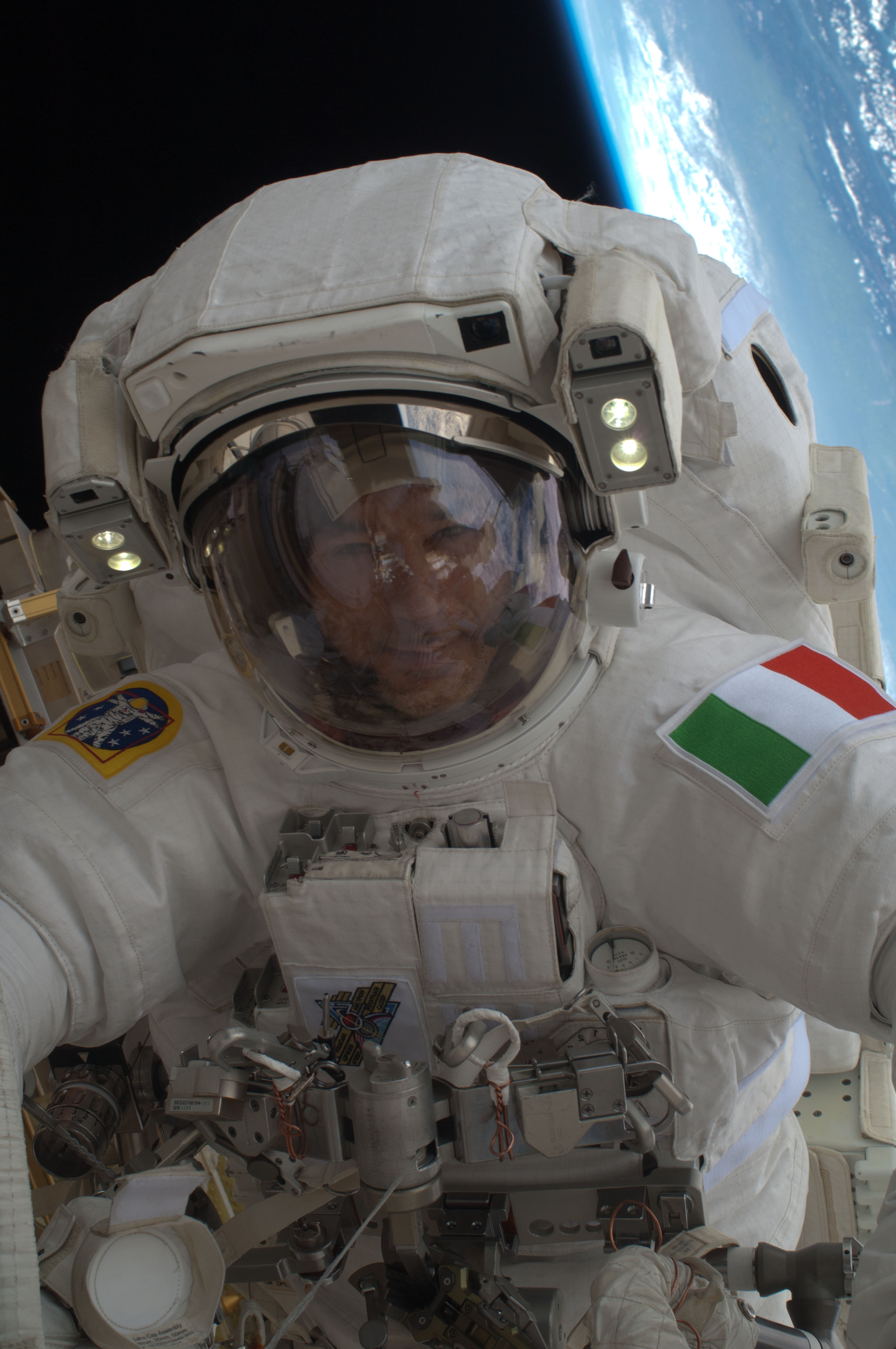
It is not unusual to see long “runs” of U.S. Orbital Segment (USOS) or Russian Orbital Segment (ROS) commanders, usually agreed for operational reasons between the International Partners (IPs) at MCOP level, and, indeed, a 14-month period elapsed without an American commander between the landing of Expedition 34’s Kevin Ford in March 2013 and the start of Steve Swanson’s tenure at the helm of Expedition 40 in May 2014. However, it is notable that 2019 looks set to be the first full calendar year since 2000 that no U.S. astronaut will command the station. “Although they are with ESA, Gerst and Parmitano are considered “USOS” crew members, as all IPs other than Russia are,” NASA’s Brandi Dean noted. “The commander duties generally alternate between Russian commanders and USOS commanders, not specifically NASA commanders.”
Moving forward, it is expected that ISS expeditions will run for 180-200 days apiece—about a month longer than standard—as NASA and the IPs ready themselves for the test-flights and Post-Certification Missions (PCMs) of the Commercial Crew Program (CCP). “We and Roscosmos agreed to extend the increments to about 180 days or so,” Mr. Navias told AmericaSpace, “to ensure that we will be making a seamless inclusion of CCP flights to blend in with Soyuz operations.”
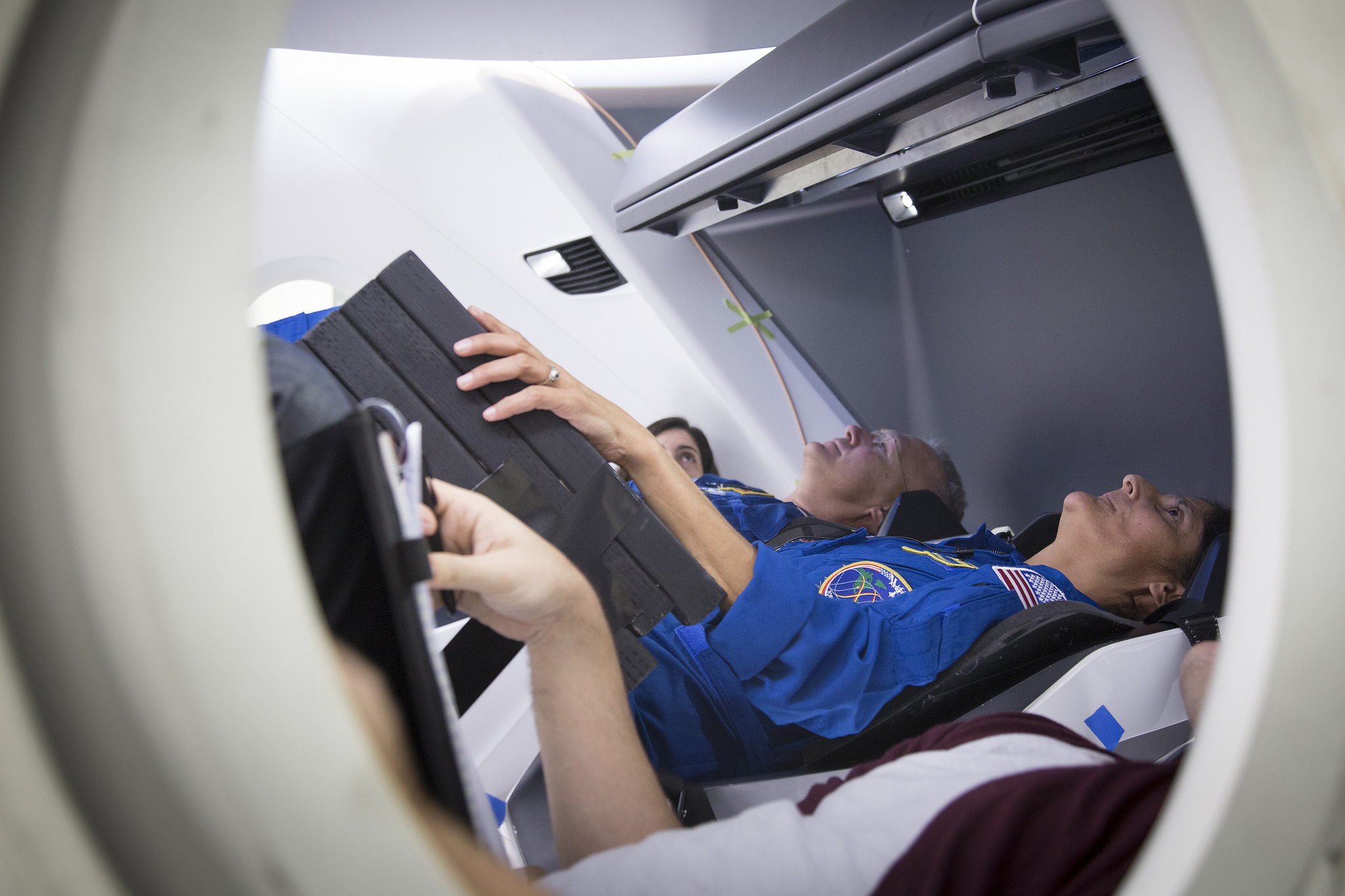
Those Commercial Crew missions presently remain in flux, with the unpiloted test-flights of SpaceX’s Crew Dragon and Boeing’s CST-100 Starliner targeted for launch in August 2018, followed by piloted test-flights at year’s end or, more likely, in the first quarter of 2019. Although veteran NASA shuttle and ISS flyers Eric Boe, Doug Hurley, Sunita Williams and former Chief Astronaut Bob Behnken were assigned to the test-flight program in July 2015, it remains to be seen which missions they will actually fly.
“The specific flight assignments for the first Commercial Crew flights haven’t been made yet,” Ms. Dean told AmericaSpace, “but it is not a given that the four “commercial crew cadre” members will be on the first two flights—they may be spread among the first several flights. At this point, everyone has been participating in work on both vehicles and they’ll start focusing on one or the other once they’ve been assigned to a specific flight. And there is a certain amount of space station training that everyone will need, as well.”
Originally, both piloted test-flights were baselined at a duration of about 14 days, but earlier this year Boeing’s contract was modified to permit a longer mission of up to six months. “NASA updated its Commercial Crew transportation Capability (CCtCap) contract with Boeing [on] 30 March,” NASA’s Stephanie Martin told AmericaSpace. “The update includes the ability to extend Boeing’s Crew Flight Test from roughly two weeks to up to six months, as well as the training and mission support for a third crew member. Expanding the original scope of the test-flight needs additional careful technical review by NASA and Boeing. The new capability can allow the docked duration of the spacecraft and, more importantly, the critical additional crew, to remain on-orbit for a longer period of time to enable additional microgravity research, maintenance and other activities.”
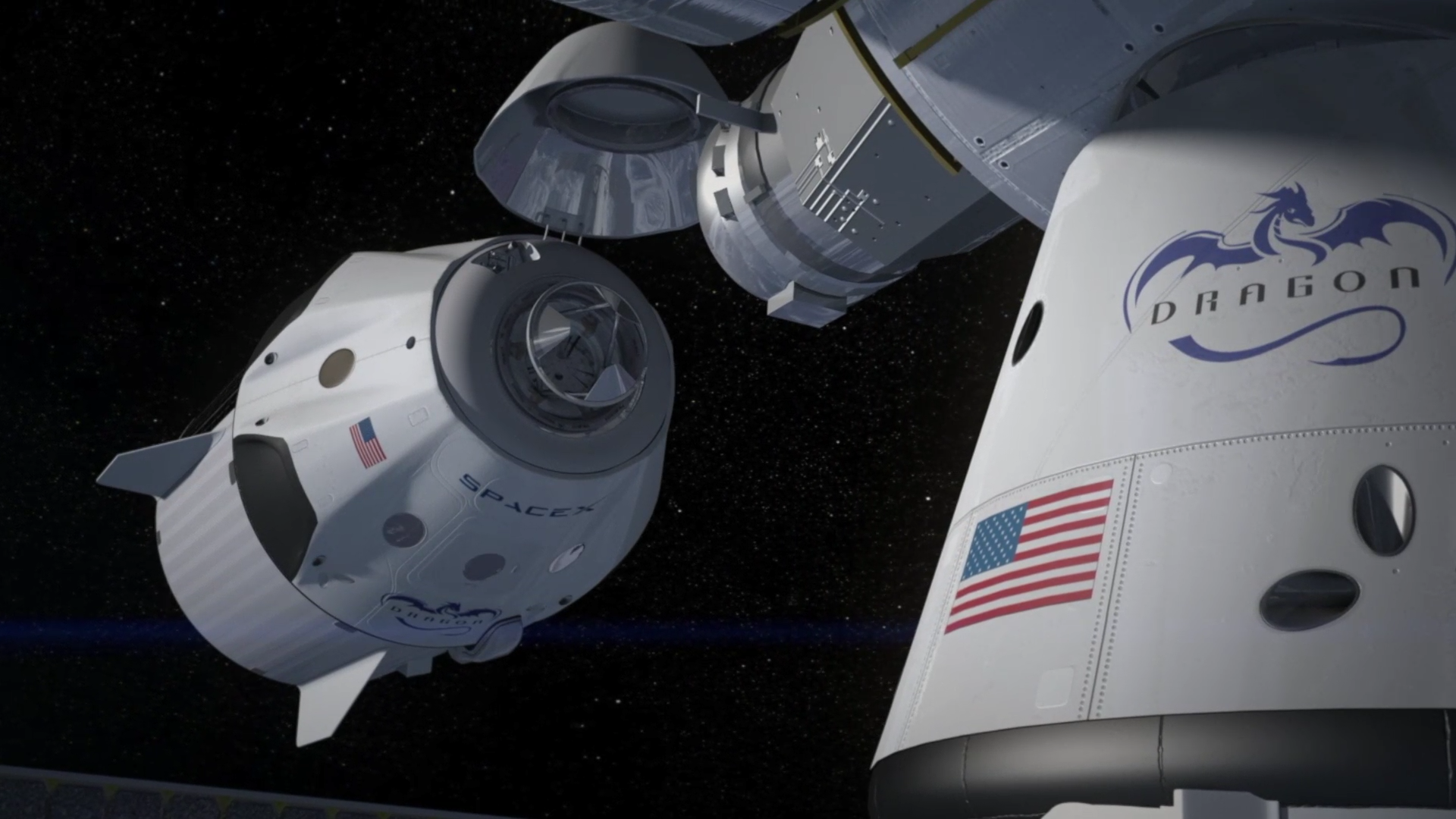
Current plans are for the Crew Dragon test-flight to remain at two weeks in length. “If SpaceX also submits a proposal to extend their stay on station during their flight-test with crew, the agency will review it through the normal procurement process, as NASA did for Boeing,” added Ms. Martin.
Primary objectives of both test-flights are to validate spacecraft systems. “During the demos, crew members will have the ability to interface with spacecraft displays and controls, communicate with mission control and the space station, monitor the spacecraft’s largely autonomous rendezvous, docking, and re-entry capabilities and assess on-orbit functions for crew health and hygiene,” Ms. Martin told AmericaSpace. “After successful completion of the flight tests with crew, NASA will review flight data to verify the systems meet certification requirements and are ready to begin regular servicing missions to the space station.”
After the piloted test-flights, the plan for Post-Certification Missions (PCMs)—which will operationally rotate ISS astronauts and cosmonauts and create the capability to increase the ISS long-duration crew from six to seven permanent members—also remains in flux, although it is expected that the first U.S. Crew Vehicle (USCV-1) will fly as a SpaceX Crew Dragon as early as April 2019. This spacecraft, the contract for which was awarded by NASA back in November 2015, is expected to include two crew members and remain docked at the station for about a month, with USCV-2, utilizing Boeing’s CST-100 Starliner, slated to launch in May 2019 for a full six-month docked period. This will be Boeing’s first PCM and its contract was awarded back in May 2015. Another mission, USCV-3, featuring the second PCM of a Crew Dragon, is targeted to loft four crew members as early as November 2019. Upon arrival at the space station, these additional astronauts and cosmonauts will fold into the incumbent ISS crews.
FOLLOW AmericaSpace on Facebook!
.




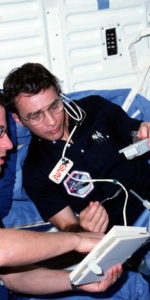
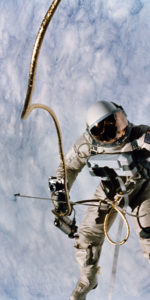
OUTRAGEOUS!!!!!!!!!!
We NEED to END the Farce of “International Cooperation” and press on Exploring Space on our own. The United States is the ONLY Space Super Power and should not believe in the Foolish Fictions of “cooperation” that is better on a long term basis and can spread the costs over several nations.
The ISS cost $146 billion, $104 billion coming from the Americans and our “partners” kicking I the last $42 billion. We also had to prop up the failing Russian Program with $400 million/yr. b/c the Draft Dodging Traitor Clinton had wet fantasies about “international cooperation” in between sessions Monica Lewinsky and lived in a Fantasy World where everything was Sweet and Bright and everyone wanted to live together in Peace and Harmony.
It is a slap in the faces of Our recently deceased Astronaut Heroes to continue with this Lunacy when we should have aggressively developed a Manned Spacecraft to replace the Shuttle beginning in 2001-2002 along with the SLS and we would have the NASA/SpaceX Orion/Dragon/SLS/Falcon Powerhouse Stop Gap Flexibility and be on the way to another Space Station [ALL American, no Foreigners anymore] R&D for Interplanetary Capabilities and a Manned Mission to Mars beginning in 2025.
However, the Stupidity, Immaturity, Apathy, Hedonism, Hypocrisy and Hatred of the mentally defective American/”American” People is NOT looking to the Future.
…That is a little harsh to what has ALWAYS been a State Department Marketing Program and corporate R&D programs…In 2022 China will operate their own station. Bigelow and others will have their own private stations as well. ISS was always a place to hide hundreds of Billions of dollars.
Tracy the Troll, Conspiracy Theory be DAMNED!!!!! The ISS was originally an American design beginning in 1986. Gov’t. mental instability and Apathy coupled with incapability to decide caused the current mess that we have.
The State Dept. is incapable of making proper Aero/Astronautical decisions and Bigelow and other private firms know and have acknowledged, somewhat indirectly, that they NEED NASA in order to test fly their ideas in Space. SpaceX gets a little over $6 billion of NASA’s budget every year and, as we have seen, SpaceX PAYS OFF. NASA is having to do everything in a slow and plodding manner b/c the Dolts in Congress don’t want to appropriate the money that IS NEEDED. “Cheap or Free” is Congress Way of Thinking….and they have as much of the Blood of the Challenger and Columbia Crews on their hands and Souls as they would say anyone else has.
China is finding out what We and the Russians have known since 1955, getting into Space and getting the hardware to work there is more difficult than we thought and DON’T let the Chinese Fool You. Their Space Station is based on the cancelled USAF “MOL” of 1963-69 and the four Military versions of the Soviet “Salyut” Space Stations of the 1970’s and 80’s.
Alex,
Yes and then in 91 the USSR collapsed and we had to find something for all those Russian engineers to do…But the real problem is that the US engineers are just too good. Anything that they are asked to do they can… Like lets build a new SLS rocket from old Shuttle/Apollo/Mecury/Gemini parts so we can use these existing NASA facilities across 50 states and Europe so we can say its an international program…But whatever you do make sure it costs $10,000 per pound and lets fly once or twice a year because we cannot have easy space access because then the masses might want to leave this planet and go live on the Moon or Mars or Europa where its cold, barren dangerous and much more exciting than our boring 9 to 5, NetFlix, Pornhub, American Idol, Fake News, Massive Government-Private Sector Corruption existence on the soon to be flooded Earth from Climate Change or Global Warming or is it now Global Cooling or is it because all the Garbage will fill the oceans raising the water levels…Take your pick of the disaster Du Jour..
“Bigelow and others will have their own private stations as well.” – Tracy The Troll
Maybe not.
“In testimony at a House Science Committee hearing on America’s future in low Earth orbit, Bhavya Lal of the Institute for Defense Analysis’ Science and Technology Policy Institute said a study performed by her organization found it unlikely that a commercial space station could generate a profit in 2025, the year NASA plans to end federal funding of the International Space Station.”
From: ‘Study offers pessimistic outlook for commercial space stations’
By Jeff Foust May 18, 2018
At: http://spacenews.com/study-offers-pessimistic-outlook-for-commercial-space-stations/
The ISS could be expanded and become a permanent dock for commercial habitats and other modules and be efficiently used as a training, research, and Lunar mission stacking facility in the relatively safe harbor of LEO. Congress will decide.
Note:
“‘NASA analysis has determined there is no technical need to end ISS before 2028,’ he said.”
From: Advisory committee asks NASA to develop plans for reduced ISS crew
By Jeff Foust 5/15/ 2018
At: http://spacenews.com/advisory-committee-asks-nasa-to-develop-plans-for-reduced-iss-crew/
Funniest uninformed comment I’ve read in awhile. The reason for no American ISS commanders in 2019 stems from the time Republican members of the U.S. Congress and Senate deliberately cut funding for commercial crew capsules while Obama was still president. This meant that Soyuz was the ONLY option available and the Russians, naturally, hiked the price of seats. Additionally, NASA set strict qualification rules for both the SpaceX and Boeing rockets and capsules which have further delayed matters and will prevent them from being considered for any official missions till 2020. You may not like international co-operation but that’s how things get done in all aspects of human and robotic spaceflight. And what’s so wrong with the space program being a useful tool of American foreign policy?
Hari, You are obviously NOT a trained Aero/Astronautical Engineer as I am and have no Patriotic Spirit and suffer from the SIA3H Syndrome unleashed by Al Gore in December, 2000.
Dem and Repub are equally to blame for this mess as they are not attentive to their Duty as they are supposed to be.
Dems were all in favor of cutting money from Space AND Defense in order to fund dead end gim crack social welfare programs that do NOTHINGF FOR ANYONE. During the eight yearsv that Obama was ILLEGALLY in the Presidency, he tried to shutdown ALL American Manned Space Programs. He got the Constellation Program shut down EXCEPT for ‘Orion’ which was saved by Repubs and Dems in Congress who were from the South’s “Space Crescent” who saw MASSIVE job losses and shutdowns of key NASA Facilities that would cripple America’s Space Program.
All because the Kenyan/Indonesian Moslem did not like America and preferred to have people sit at home with a Gov’t. check in the mail each month paid for by the Taxpayers.
With the saving of ‘Orion’, contractors attempted to use Positive PR to get the Message to the American Public about what was RWSALLY going on and the only to listen were the few sober heads in Congress who then mapped out a new route from as much of ‘Constellation’ as they could save.
John McCain did not like to use Russian Soyuz’s for transport, but when Your Own Country is run by mentally defective politicians and the People want to live in Fantasy Worlds, YOU’VE GOT A PROBLEM!!!!!
We are getting back on track, but to let ourselves be bullied and overrun by Countries that don’t have the Will to do this undertaking as WE have done says something terrible. If I were in charge, the SLS would be named “Excelsior” and test flights would have started in 2016-17, with Manned Test Flights in 2021.
SpaceX is up to speed but Elon Musk has stated that Falcon Heavy will NOT be used for Manned Flights. Hopefully, he will change his mind on that. Boeing’s Delta IV MLV and HLV have been flown enough times to do cursory man rating evals while the CST-100 “Starliner” is tentatively set to fly later this year or early next. Boeing had to R&D it on what amounted to a shoestring budget from D.C. but company profits made sure it did not die.
NO ONE has ever buil,t or flown or a “capsule.” That is a Childish, uneducated term that the Astronautically Illiterate use b/c they have NO IDEA what they are talking about and if they did, they would know that even the Mercury Astronauts DID NOT LIKE the use of the term “capsule.” The Mercury Seven coined the more Engineering term, “Spacecraft.”
IF International Cooperation is so good and how things are done in all aspects of manned and Unmanned Space Exploration, WHY have Europe, India, Japan and China done numerous unmanned missions of their own to the Moon, Venus and Mars?
WE DON’T NEED THE FOREIGNERS!!!!! WE CAN DO THIS BY OURSELVES!!!!! WE PUT THE FIRST MEN ON THE MOON!!!!! WE SENT THE FIRST PROBES TO THE OUTER PLANETS!!!!! WE SENT THE FIRST PROBES TO THE STARS!!!!! HOW MANY EURO, RUSSO, SINO, NIPPO, INDI MISSIONS HAVE BEEN SENT PAST MARS?????
CASSINI WAS AMERICAN, HUYGENS WAS EURO AND CASSINI HAD THE STARS AND STRIPES OF ‘OLD GLORY’ EMBLAZONED ON IT!!!!! EURO TECH WAS AT A MINIMUM ON THE MISSION AND ONLY THE UNITED STATES HAS EVER HAD THE TECHNOLOGY THAT COULD HEAD OUT THERE AND DO YEARS LONG EXPLORATION THAT PUTS AMERICA IN A CLASS BY HERSELF AND SHOWS THE WORLD THAT YOU CAN FOLLOW OUR LEAD, IF YOU HAVE THE MOTIVATION FOR IT.
YOU, HARI, ARE GROSSLY AND DISGUSTINGLY UNINFORMED.
How do we block people on this site? Now that a denizen of the fever swamp has found this site I would like to block them.
The best method seems to be to ignore them and let them either improve or vent to the point that it is glaringly obvious that they are out of it.The SpaceX getting over $6B a year of NASA money comment should be a start on realizing how far off this one is.
Indeed, why bother replying at all when the whole thread is likely to be erased?
That is why I seldom comment on most sites – the signal to noise ratio is not favorable. I often miss the Usenet days when you had to have some technical knowhow to find the discussions.
“…why bother replying at all when the whole thread is likely to be erased?”
What causes whole threads to be erased, is 100 deranged hateful comments from Moon Miner replying to himself with material pasted from other sites.
The Laissez-faire comment policy at America Space could (in theory) lead to some fun, spirited exchanges; unfortunately sometimes the comments here serve as psychotic salt licks for the usual suspects.
“And what’s so wrong with the space program being a useful tool of American foreign policy?”
– Hari
Using NASA, the ISS, the SLS, the International Orion, the future international Moon Village, Lunar resources, or any other aspect of our current or future space program as a “useful tool of American foreign policy” is a wise choice.
Why?
To help us try to avoid very nasty and super costly conventional wars or even a global nuclear war.
“Rosa Brooks’ experience at the Pentagon, where she was a counselor to the undersecretary of defense for policy, serves as the foundation for her new book, ‘How Everything Became War and the Military Became Everything: Tales From the Pentagon’. Brooks traces the military’s growing role in American life, and the dangers it presents for law, accountability, and international relations.”
And, “‘What I worry about most, maybe from being a law professor with a background in human-rights law, is not so much something to do with the military as an institution. It has more to do with the implications, often I think sort of invisible to us, of choosing to view so many types of threats through the framework of war.’”
From: ‘The Forever War and the Ever-Expanding Military’ By Isaac Chotiner August 8, 2016
At: http://www.slate.com/articles/news_and_politics/interrogation/2016/08/rosa_brooks_on_her_new_book_how_everything_became_war_and_the_military_became.html
This seems like a reasonable plan, we have worked with the Europeans (and Japanese and Canadians) and they are full partners. They bring a lot of expertise to the team.
Hopefully the crew capsules will fly this year, even without crew members, and prove themselves.
And we can ignore the comments from people who live in the “fever swamp”.
We have gotten NOTHING from the Europeans, Japanese, Canadiens or anyone else. “Full partnership” will end when the ISS is shut down and everyone has to go in whatever direction they can figure out.
CST-100 “Starliner” will fly and will be part of the “Orion/Dragon/Starliner” Stop Gap Flexibility that we NEED and have needed since the beginning of the Program.
I don’t live in the “fever swamp,” I live in Reality. What’s Your excuse?